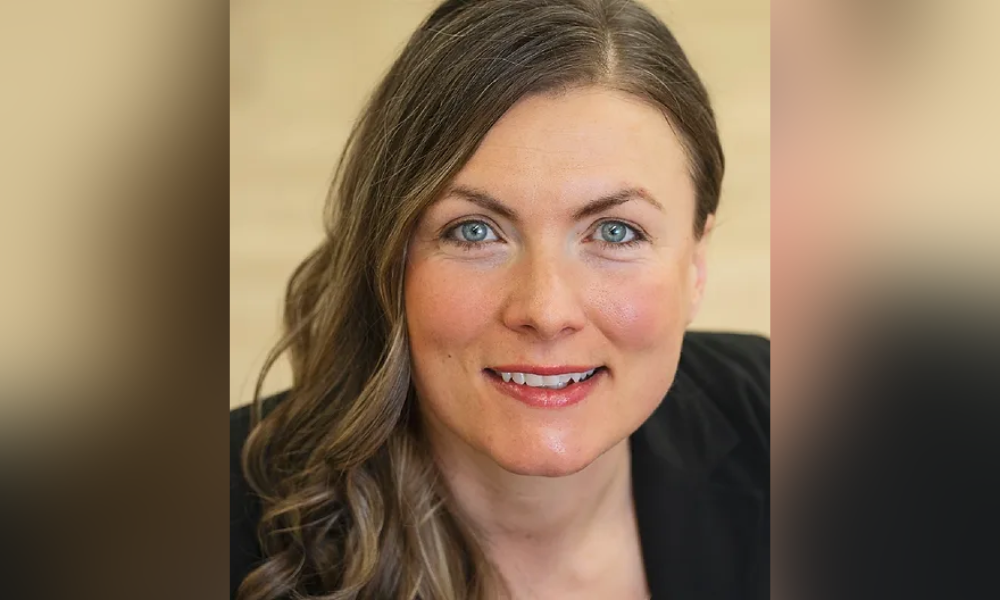Why entrepreneur says official standards need to recognize gender differences

Jodi Huettner is trying to get law creators and rule-makers to recognize gender differences within policies regulating personal protective equipment standards in the workplace.
“We thought we'd done what we needed to do to get to the equity we know today,” says Huettner referring to a movement in the 90s to eliminate gender language from official government policy.
“Here we are 30 years later, learning that we have ignored the statistical distinct natures of the genders… we really only have a monopoly in terms of fit, and it's only a 200 pound Caucasian male body bell curve that we use in design.”
Huettner believes its time to mandate inclusive design in the creation of PPE. She’s been lobbying the BC government, WorkSafe BC, as well as the CSA Group to change wording in official documents to reflect differences between men and women.
Huettner began this crusade following a five-year career as a mechanical engineer with an environmental consulting firm in British Columbia. She worked outdoors, wearing coveralls that didn’t fit, and made it extremely difficult for her to use the bathroom.
Huettner says a few pee breaks could set her team back by an hour in a day, because she would need to call someone to pick her up, take her to the bathroom, and drive her back to the worksite. Huettner, on the advice of other women, stopped going to the bathroom. She stopped drinking water throughout the day. All of that led to health problems.
It was time for a change. Huettner sowed her own coveralls that allowed her to pee outside like the men. “I went through the kids' butt flap pajama bottom kind of model… that didn't last me more than a week,” explains Huettner. “Every time I bent over there were jokes…they were all hanging around waiting to see when I would try to use the thing” she says with a bit of a laugh.
Huettner eventually made coveralls that worked for her, but she knew there were many other women in the trades or other industries that needed PPE that fit and worked for their bodies.
Huettner quit her job and became the founder and president of Helga Wear Inc. She grinded, the way so many fledgling entrepreneurs do, working part-time jobs while trying to build their business. Huettner caught a break when she was selected to be featured in a CBC television show called The Stats of Life.
It got her noticed by Seaspan, and the company enlisted her skills to create coveralls for the women in its shipbuilding workforce. She made everything adjustable to guarantee it would fit, but she also designed the PPE using women’s grading standards. Coveralls from Helga Wear fit the women of Seaspan perfectly.
“It was a huge 'aha' moment for me because it's not difficult. We don't have to do anything extra. We already have all the body data, all the information we need to be able to make PPE fit women. The problem is, is we're just not making it for women's bodies.”
Huettner will be discussing the standards and regulations around what kind of PPE employers need to provide to their workforce at the Women in Safety Summit in March.
Huettner has made presentations to BC’s labour ministry and WorkSafe BC, suggesting language within the current regulations be changed to reflect differences between male and female bodies.
Huettner was told “bringing gender language back into our policy is going to take years, it's not something that we can just do quickly.” Instead, she says, “they came up with some draft guidelines to help employers interpret the current policy and regulations with a gendered lens.”
Huettner calls it a good first step. She has also taken other steps, including working with the CSA Group to create and administer a survey to women working in heavy industry across Canada. It identified a serious need for women’s PPE within many sectors of the economy. Huettner also convinced the CSA Group to add a footnote to its Z96 codes and standards pertaining to PPE to include requirements for both men’s and women’s grading of sizes.
With every small success, Huettner says there has also been a lot of resistance, including at one presentation to the CSA Group where she discovered “voices in the manufacturing sector” who are “working closely with the CSA group” and “don't believe there's a there's a business case to be made” for women’s PPE.
But safety is rarely about bottom lines and business cases. It’s about making sure workers go home at the end of the day, and that applies to men and women.





